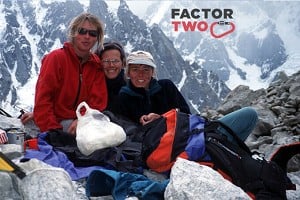Presently it’s mild and misty in Southern Snowdonia, but what a month. I make that 19 days of climbable conditions down here in Southern Snowdonia and it’s only mid January. I thought that by rounding up what was climbed it may be a useful way of letting people know just what conditions are required to bring these brilliant routes into condition.
Good snow conditions are a rare thing in these parts, maybe it’s the proximity of the coast or a lack of overall elevation. Inland Aran Fawddwy at 905m ought to buck this trend but it doesn’t seem to. Ice is therefore the first thing to look for. The Ramp (iii) on Cader Idris has been climbable every year for the last ten years or so that I can remember. Three good ice pitches slanting up the impressive head wall of Cwm Cau. No snow cover is required just a willingness to scramble up and off the route through heather and woodrush. Cwm Cau is also home to the three star Great Gully (iv), no ascents that I know of this year. I know people who have been waiting years for firm snow to allow their ascent. I fear that they’ll be waiting long time, best just get on with it when the lower ice pitch has formed and accept some wading later on. The steeper pitches higher up receive little drainage and are too steep to collect snow, as a result they are always going to feel a little mixed.
On the other side of mountain the cliffs of Pen y Gadair have been superb. Good conditions here are seemingly rare, maybe a once in a decade affair. Central Gully (iii,4) is a compelling line and was at its best just after New Year under that elusive good snow before it banked out completely. As a route for future seasons I’m not sure what to say, it could be a long snowy flog with a couple of vicious rock pitches. Two routes certainly worth looking out for are Rattler (iii,4) and Gwth (iv,5) as ice is the main ingredient here. The main deal of Rattler is the steep and shallow lower gully. It was chock full of ice for weeks and received at least four ascents over this period. Above the icy section the line runs up for rope length after rope length of grade i/ii ground. For those not interested in the summit experience two abseils will see you back to the ground, we’ve been doing this off a spike wide out to the right and an Abalakov thread. The main ice pitch of Gwth is currently the big daddy of the crag, high up amongst steep rocky ground it makes its escape up the left wall of a dead end gully. The climbing here was pretty hard as the pitch isn’t one single line but more a series of moves from one icicle to another before creeping up the side of the final big pillar. The peg crack that the guide book suggests was nowhere to be found and it would have been a serious lead had the ice been any thinner.
The big draw on Cader is the Cold Climbs classic Trojan (v). I’ve heard a rumour that it was climbed this year but am not entirely sure that this is true, it was a brave team if it did happen. I took a glance at the line just about every time I was on the mountain but despite being a complete line early on it never seemed to get any fatter. A number of teams walked up to it and one even started climbing before knocking off a ten foot section of ice. The nearby routes of Colonial Virgin (v/vi) and The Shining (iv) similarly never really fattened. Oddly only a hundred metres further along the cliff Barn Door (iii,4) was incredible. The direct variant (iv,5) which the guide book suggests seldom forms was so fat that it swallowed up the original line. The route was climbed both ways and the agreed assessment was that it’s pretty damn hard for grade iii.
With the exception of prospective visits to Trojan Cader Idris has been the preserve of local climbers. The waterfalls of the Dyfi Valley have however drawn some visitors. Prolonged cold weather is required here but they probably form more often than people think. I’d heard that last year all of the Dyfi waterfalls listed in the guide book were climbed. Craig Wen Falls (iii) always seem to be the first to form despite its Southerly aspect. It can be seen from the main road and as such attracted a number of teams. Pistyll Gwyn (iii) is a rarer beast and you need to commit to the walk in before the line can be viewed. It’s quite a unique route really, no tumbling ice fall but a uniform 80 metre long 55 degree slab. This steady flow of water probably aids its formation. The upper section is a tight gorge where there didn’t seem any way of climbing this and remaining dry. We didn’t feel short changed at all though as the slab pitches are quite remarkable in their own right. Another team climbed the route a few days after us and also raved about the climbing. Nearby Nant y Cafn Falls (iv) didn’t come into condition seemingly suffering from the same concentrated force of water that inhibited ice formation on the upper pitches of Pistyll Gwyn. The big prize in these parts is the much celebrated Maesglasau Falls (iv), 200m of water ice, much of it steep. I kept an eye on this route for over a week before it came into condition, the black line of flowing water in the centre of the falls gradually becoming thinner and thinner. Several teams had the pleasure of experiencing the route, surely one of, if not the best ice climb in Wales. There are some things that the guide book doesn’t tell you though. The first is that the legal (and least disruptive for the land owners) approach walk is to contour in around the back of the cwm from the east. The second is that there is a left hand variant which crosses the ice fall from the top of pitch 2. The right hand line proved a bit of a crumbling nightmare this time round. The ice looks thick and featured but is really just a veneer covering the heather and other such botanical insecurities.
The secretive Aran region has largely remained so over this winter spell. I made a brief foray onto Aran Benllyn early on climbing Winding Gully (ii) and a couple of unrecorded ice lines. East Gully Direct (iv) looks to have a fine steep pitch which will undoubtedly remain the reward for only the most dedicated lover of solitude. There is so much potential amongst these mountains if only snow conditions were good. Tourist Gully (ii/iii) in particular looks like it could be such a good climb.
And now onto the routes that got away. Back on Cader the routes of Twr Du were surely in excellent condition. The icy Left Hand Christmas Retreat Gully (ii/iii) on Aran Fawddwy sounded attractive but deep snow buried the line and the road before I could get over there.
There’s great satisfaction in looking back on what routes have been possible over the last few weeks. Let’s hope that the chance will come again.
Huw Gilbert UKC North Wales Correspondent
18th January 2010.









